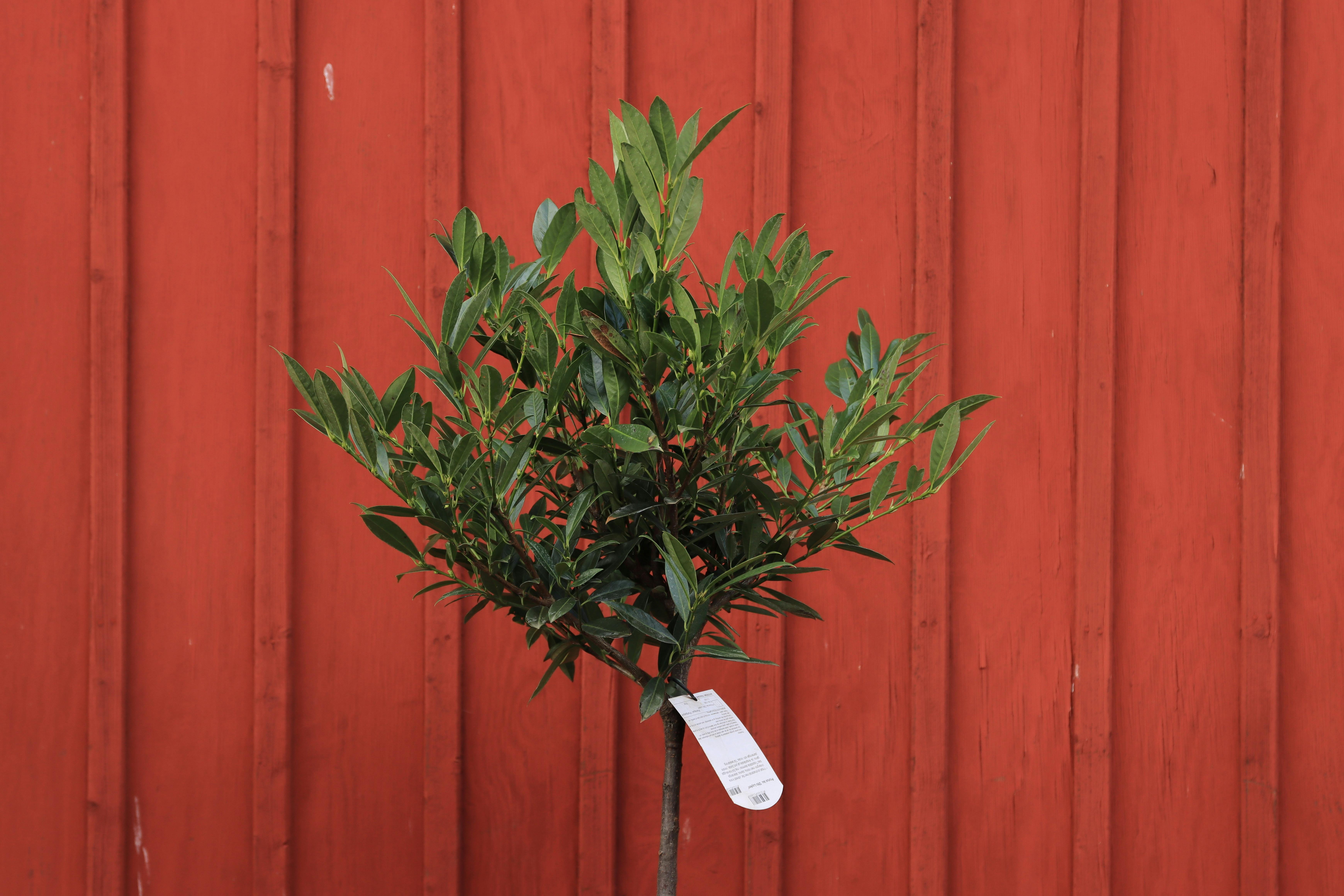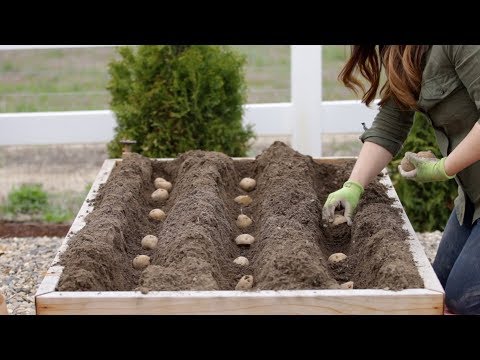Planting potatoes is a simple and rewarding task. Potatoes are a great source of nutrients and can be grown in most climates with minimal effort. With the right technique, you can have a bumper crop of potatoes in no time. This guide will provide you with all the information you need to successfully plant potatoes at home or in your garden.To prepare potatoes for planting, you will need to begin by selecting healthy, disease-free potatoes. Look for seed potatoes that are firm and free of any spots or blemishes. If the potatoes have started to sprout, brush off the sprouts before planting.
Next, cut the potatoes into pieces that are roughly two inches in size. Each piece should have at least one eye, or bud, on it. Let the cut pieces sit for several hours, so that the cuts can dry out and form a protective layer against disease.
Before planting, add some compost or fertilizer to the soil in order to provide extra nutrients for the potatoes as they grow. Dig shallow trenches about three inches deep and place the potato pieces in them with the eyes facing up. Cover with soil and tamp down gently to make sure they are secure. Water well after planting.
Supplies Needed to Plant Potatoes
Planting potatoes is an easy and rewarding activity that can be done with minimal supplies. To begin, you’ll need some potato seed, which can be purchased from any garden center or seed supplier. You’ll also need some soil or compost to fill the planting area. It’s best to use a high-quality soil or compost that is rich in organic matter and well-draining. Additionally, you’ll need fertilizer to help provide nutrients for the potatoes as they grow. Finally, you’ll need a hoe or trowel to help dig the planting hole and mix the soil or compost with the fertilizer. With these supplies on hand, you’re ready to start planting potatoes!
Once you have your supplies gathered, it’s time to prepare the planting area. Start by clearing out any weeds or debris from the area and making sure it is free of rocks and sticks. Then use your hoe or trowel to dig a hole 6–8 inches deep and wide enough for your potato seed pieces. Place your potato seed pieces into the hole one by one, making sure that each piece is covered with soil or compost and lightly pressed down. Finally, mix in some fertilizer with the soil before covering up the entire planting area with more soil.
Once everything is planted, water generously but be careful not to over water as this can cause issues with root rot. Then all you have to do is wait for those delicious potatoes to start sprouting! With just a few simple supplies and steps, you can easily plant potatoes in your own backyard and enjoy their delicious harvest!
Choosing the Right Location for Planting Potatoes
When planting potatoes, choosing the right location is essential to ensure a good harvest. Potatoes need plenty of sunlight and well-drained soil that is rich in nutrients. It is best to find a spot that gets at least six hours of direct sunlight each day. The soil should be loamy with some organic matter added. If you don’t have access to a soil test, you can add compost or well-rotted manure to improve the texture, structure, and nutrient content.
Potatoes also prefer an area with good air circulation, as this helps reduce the risk of diseases like blight. Avoid areas where water tends to pool or where there are standing pools of water after a rain shower as this can cause problems with root rot. When planting potatoes, it’s important to keep them away from other root crops such as carrots and onions, as they can spread diseases between each other.
In addition to finding the right location for your potatoes, it’s also important to consider how you will maintain the crop during its growth season. If possible, choose an area that has easy access for tilling and weeding. Mulching is also beneficial in helping retain moisture and keeping weeds down. Finally, avoid planting potatoes in an area that was recently used for tomatoes or peppers as these crops can spread disease more easily than other vegetables.
By taking some time to find the right location for your potato crop and making sure you maintain it properly during its growth season, you can be sure your potatoes will reach their full potential!
How to Plant Seed Potatoes
Planting potatoes is a great way to grow your own food, and it doesn’t have to be difficult. All you need is some seed potatoes, which are potatoes that are used specifically for growing, and some soil. You can buy seed potatoes from garden centers or online stores. Once you have the seed potatoes, you can get started planting them.
Begin by preparing the soil for planting. Choose a spot in your garden that gets plenty of sunlight and has good drainage. Dig up the soil in the area and add some compost or aged manure to it to help the soil retain moisture and nutrient levels. Make sure to mix it in well before planting.
Next, choose the right type of potato for your environment. Different types of potato thrive in different climates and conditions, so make sure to do your research before choosing one for planting. Once you’ve chosen a type of potato, cut it into pieces with two or three eyes (small buds) per piece.
After cutting the potatoes into pieces, let them sit out in a cool place for several days until they start to form a thick skin on them; this will help them resist disease when planted. When ready, dig small holes about 6 inches deep and 12 inches apart in the prepared soil. Place each potato piece in its own hole with the eyes facing up. Make sure to cover each piece with enough soil so that only the eyes are visible above ground level when finished.
Finally, water well after planting and keep an eye out for any signs of disease or pests throughout the growing season. If any issues arise, take care of them as soon as possible so they don’t spread to other plants or cause more damage down the line. With proper care and attention, you can enjoy harvesting your own delicious potatoes later on!
How to Space Potato Plants
Potatoes can be a great addition to the home garden, but it is important to understand the proper spacing for maximum yields. For most varieties, potatoes should be planted 18-24 inches (45-60 cm) apart, in rows that are 36-48 inches (90-120 cm) apart. When planting, be sure to dig a hole that is about twice as deep as the seed potato is long. This helps ensure that there will be enough soil for the developing root system of the plant. Once planted, the seed potato should be covered with soil and packed down firmly. To help prevent disease and pests from spreading between plants, it is important to leave adequate space between each plant in order to allow for good air circulation.
When planting more than one row of potatoes in a given area, it is recommended to stagger them by alternating rows in a zigzag pattern. This will help create an environment where air can flow freely between plants and reduce the risk of disease or pest infestations. Additionally, this type of spacing pattern can also make harvesting easier as you will not have to maneuver around multiple rows at once.
Once your potato plants have been established and are growing well, you may want to thin them out by removing some of the smaller or weaker plants from each row. This helps promote healthy growth in your remaining crop by reducing competition for resources such as light and water. Additionally, thinning out your plants can also make harvesting much easier later on as there will be fewer potatoes per row when it comes time to pick them up.
Potatoes are an easy crop to grow at home with minimal effort or prior experience needed. By understanding how to properly space your potato plants, you can ensure optimal growth and yields from your crop this season!

Covering Potato Plants
Potatoes are a popular vegetable that can be grown in any garden. The key to a successful crop of potatoes is to cover and mulch the plants properly. Covering the potato plants helps to keep them protected from pests, extreme temperatures, and disease. It also helps to keep the soil moist so the potatoes can grow well. When covering your potato plants, you should use a light-weight fabric such as burlap or old sheets. Make sure that the fabric covers the entire plant and extends out several inches around it. Anchor down the edges with rocks or large pieces of wood so that it won’t blow away in strong winds. This will help keep your potatoes safe until they are ready to harvest.
Mulching Potato Plants
Mulching is also an important part of growing potatoes successfully. Mulching helps to protect the roots from extreme temperatures, while also helping to retain moisture in the soil. It also helps to suppress weeds and prevent erosion of soil. When mulching your potato plants, use a light-weight material such as straw, hay, or grass clippings. Spread a thick layer of mulch around each plant, making sure that it extends two to three inches out from the base of the plant. This will help keep your potatoes healthy and productive until they are ready for harvest!
Watering and Fertilizing Potato Plants
Watering and fertilizing potato plants is an important part of their cultivation. Potatoes need plenty of water during their growth, from the time they sprout until they are harvested. Watering should be done regularly, with about an inch of water per week being sufficient. It is best to water in the morning, so that the leaves have time to dry before nightfall. If the soil is too dry and hard, watering can be done more frequently.
Fertilization is also essential for potatoes. The fertilizer should be applied when the plants are about six inches tall, and then again when they reach 12 to 18 inches in height. Organic fertilizers such as compost or manure can be used, or a balanced fertilizer blend for vegetables can also be used. Fertilizer should be applied around the base of each plant, but not directly onto the foliage or stems as this can cause burning.
It is important to monitor the plants for signs of nutrient deficiencies or disease throughout the growing season. If any problems are noticed, it is best to address them promptly so that they do not spread and affect other plants in the garden. Proper watering and fertilizing will help ensure healthy potato plants that will yield a good crop of delicious potatoes!
Weeding Potato Plant Beds
Weeding potato plant beds is an important part of keeping your plants healthy and producing a good crop. It’s essential to remove weeds from the bed so that they don’t compete with the potato plants for nutrients, water, and light. Weeds can also harbor pests and diseases that can spread to your potato plants. To keep weeds at bay, it’s important to weed regularly throughout the growing season.
Before you start weeding, it’s a good idea to take a few moments to assess the bed for any potential problems. Look for signs of pests or diseases, as well as any areas that may be overly dry or wet. This will help you identify any potential issues before they become too serious.
When it comes time to actually weed the bed, you’ll need to be prepared with the right tools. A hoe is a great tool for removing larger weeds from the bed, while a hand trowel is better suited for getting into tight spaces and removing smaller weeds. You’ll also want to have some gloves on hand to protect your hands from any sharp objects in the soil.
Once you’ve removed all of the weeds from the bed, it’s important to take some time to cultivate and aerate the soil around your potato plants. This will help ensure that all of their roots are getting enough oxygen and nutrients for optimal growth. You can do this with either a garden fork or tiller, depending on how large your bed is and how much space you have available.
Finally, make sure that you put down some mulch around your plants once they’re planted in order to help control future weed growth. A layer of organic mulch around each plant will help keep new weeds from sprouting up in between them and will also help retain moisture in the soil during dry spells.
By taking these simple steps for weeding potato plant beds regularly throughout the growing season, you’ll be able to ensure that your potatoes get all of the nutrients they need while keeping pesky weeds at bay!

Conclusion
Potato planting is a simple and satisfying process that can yield a delicious harvest in no time. While potatoes are best planted in the spring, they can be planted as late as July and still provide a good yield. Before planting, it is important to choose potato varieties that are well-suited to your area; it is also important to prepare the soil properly, fertilize and mulch, and choose an appropriate location for planting. After planting, potatoes may require watering, hilling (mounding soil around plants), and weeding throughout the growing season. With this process in mind, anyone can grow potatoes successfully!
Ultimately, potato growing is a rewarding exercise that allows gardeners to enjoy the fruits of their labor. From selecting the right variety of potatoes to harvesting your own crop at harvest time, potato growing is an easy way to bring fresh produce into your diet!

